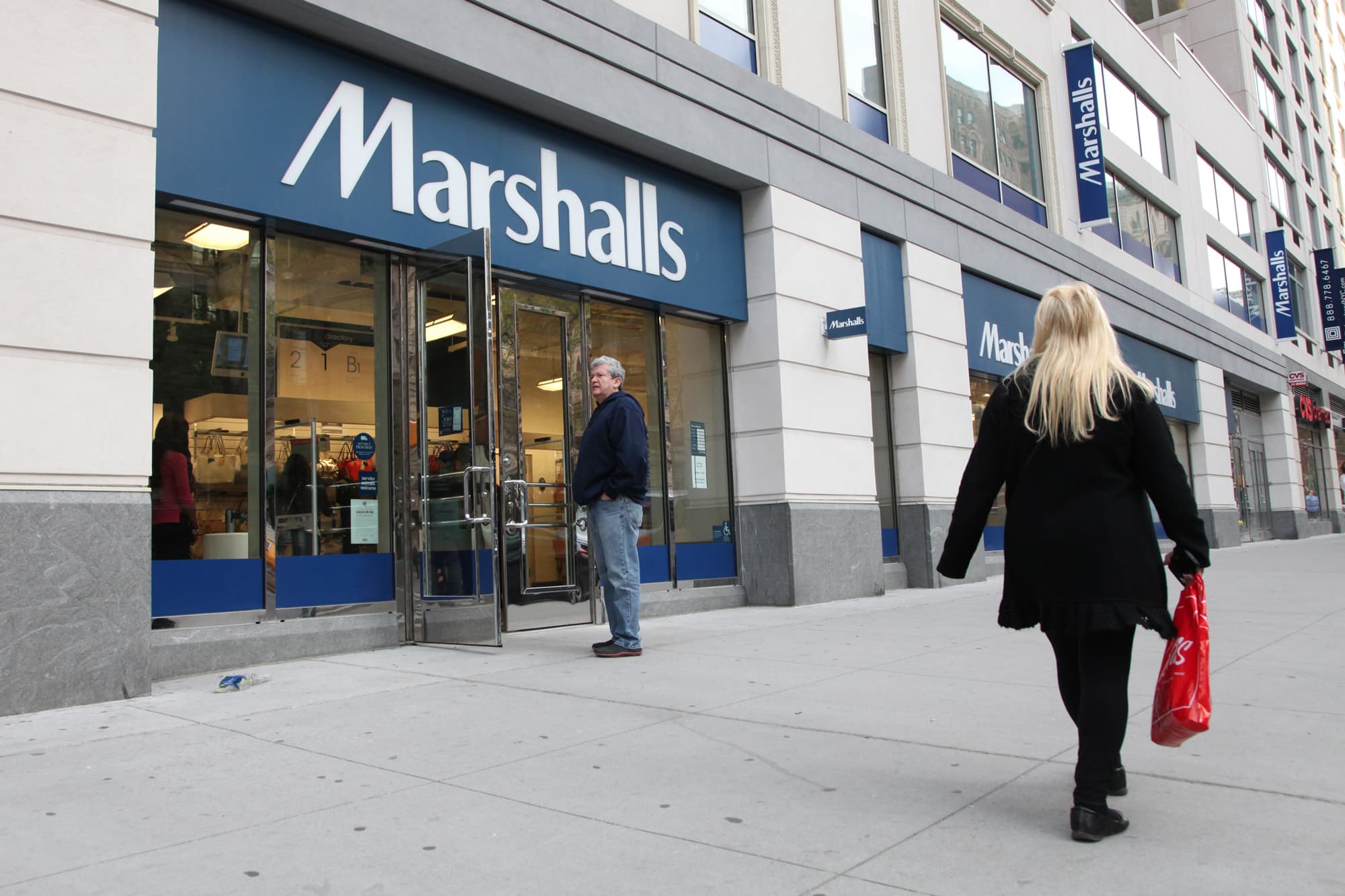Walmart raises outlook as groceries boost sales, inventory glut recedes
Walmart said Tuesday that sales rose by nearly 9% in the fiscal third quarter, as Americans across income levels bought the company’s low-priced groceries.
The discounter beat Wall Street’s expectations for the quarter and raised its outlook to reflect that beat.
related investing news
Here’s what Walmart reported for the three-month period ended Oct. 31, according to Refinitiv:
- Earnings per share: $1.50 adjusted vs. $1.32 expected
- Revenue: $152.81 billion vs. $147.75 billion expected
Walmart posted a net loss of $1.8 billion, or 66 cents per share, down from a profit of $3.11 billion, or $1.11 per share, a year earlier.
On an adjusted basis, the company reported earnings of $1.50 per share. The retailer recorded a charge of nearly $3.33 billion, or $1.05 a share, as part of an opioid settlement.
‘Pocketbooks are stretched’
Shoppers are watching how they spend, Walmart Chief Financial Officer John David Rainey said. They are buying less-expensive proteins such as hot dogs, beans and peanut butter instead of pricier meats. They are waiting for sales events to buy items like TVs and air fryers and are spending less in the apparel and home categories.
“Pocketbooks are stretched,” he said. “People have less discretionary income or less disposable income to spend on things — and so they’re looking for value.”
The discounter also made progress with an industry-wide headache: a glut of excess inventory. Walmart’s inventory was up 13% year over year in the third quarter. That’s down from 25% in the second quarter and 32% in the first quarter.
Rainey said Walmart has canceled orders, increased markdowns and cleared through the backlog of merchandise stuck at ports. He said about 70% of the inventory increase is from inflation rather than more units.
“From a unit perspective, we find ourselves in a much, much better place than we did in the first part of the year,” he said.
Comparable sales for Walmart U.S. rose 8.2%, excluding fuel. The key retail metric includes sales from Walmart stores and clubs open for the at least a year, including remodels, relocations and expansions.
Walmart is navigating a more challenging backdrop as it gears up for the holidays. Inflation is near a four-decade high, driving up the prices of housing, gas and more. Competitors are dangling deep discounts to try to clear through excess inventory. And consumers are spending again on travel, dining out and other experiences.
As inflation runs hot, however, the big-box retailer has attracted higher-income shoppers. About 75% of its market share gains in food came from households that make more than $100,000 a year, Rainey said. The discounter saw that same pattern in the previous quarter.
So far, he said the holidays are “off to a pretty solid start,” but “consumers are using discretion in terms of what they’re buying.”
This story is developing. Please check back for updates.
- The Benefits of Meal Prepping for Busy Moms - October 28, 2023
- The 11 Best Cash ETFs in Canada (Plus HISA ETFs and Money Market ETFs) - October 8, 2023
- Build a Variety of Outfits with These 7 Affordable Pieces - October 7, 2023

